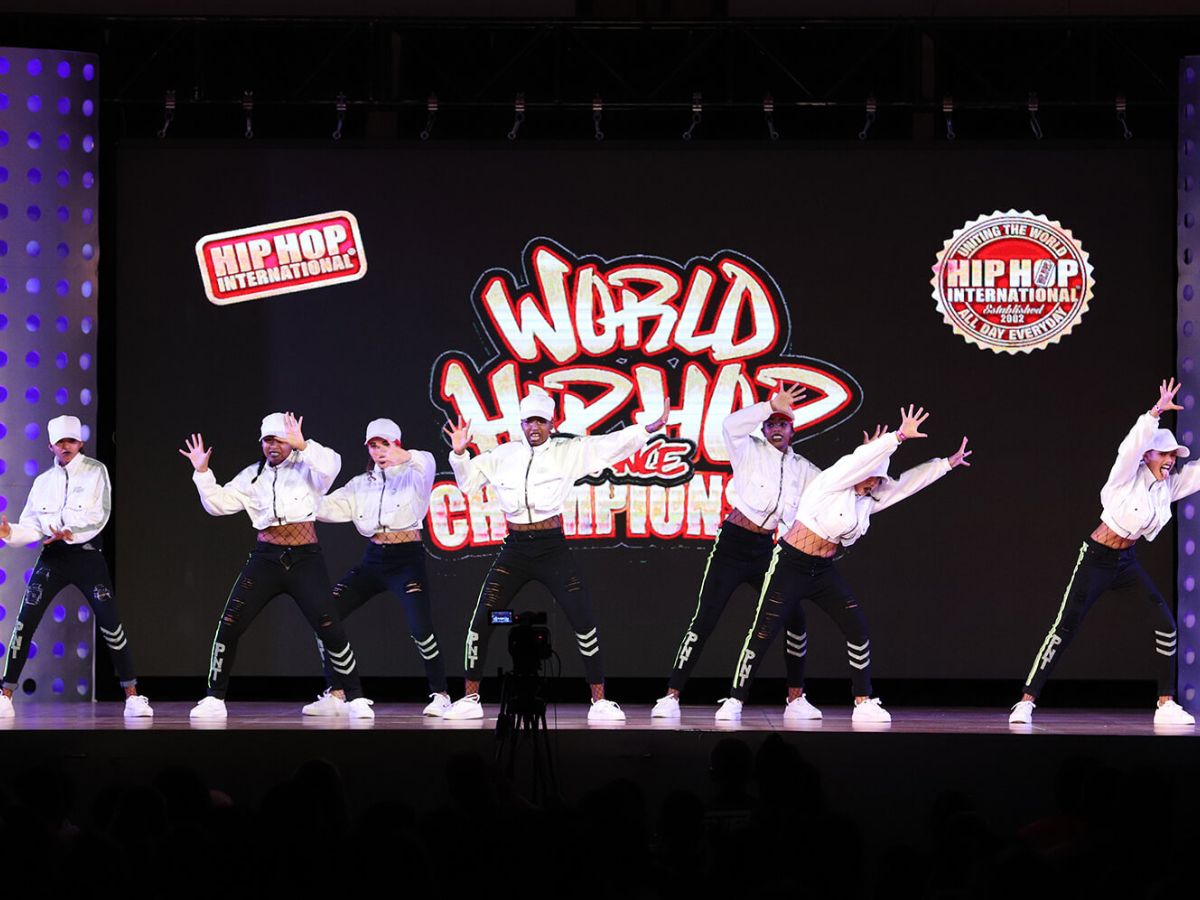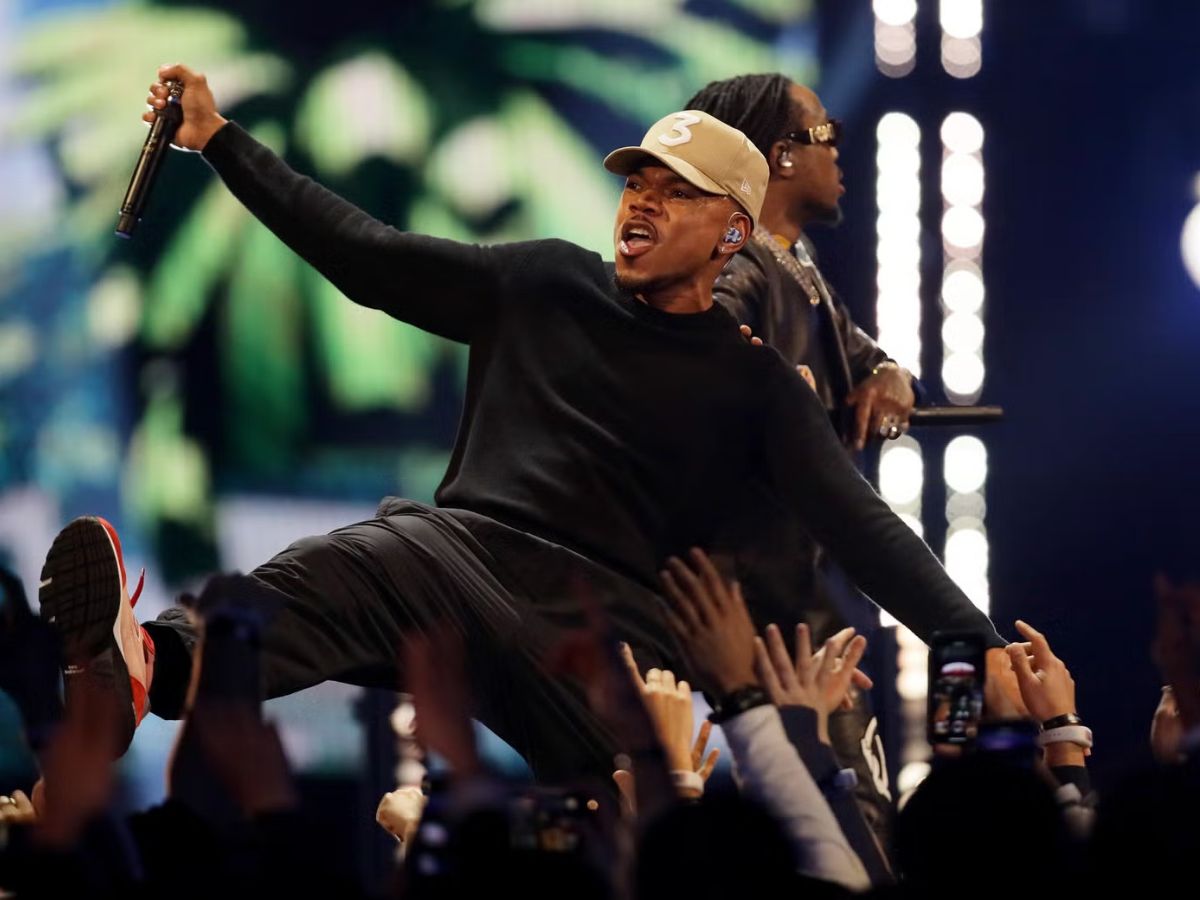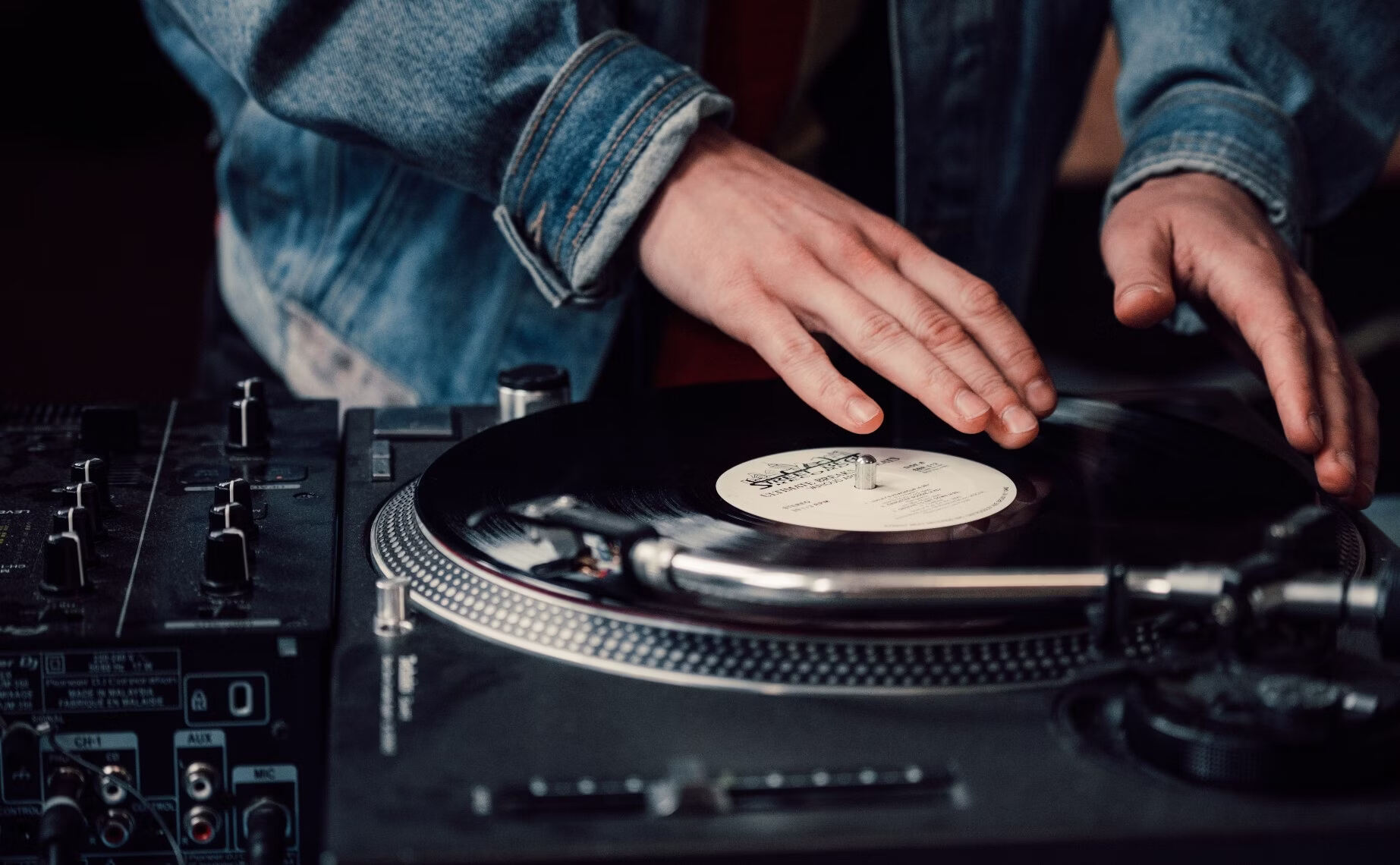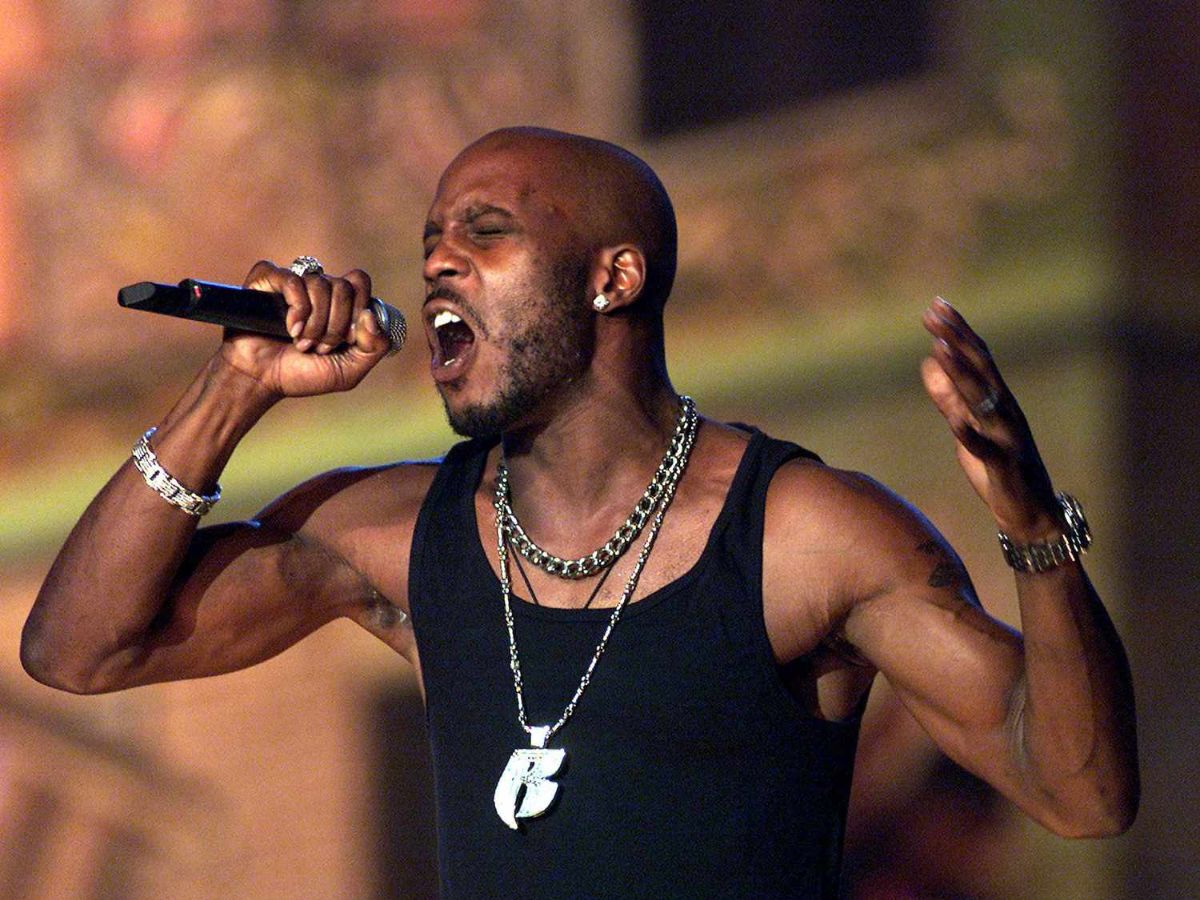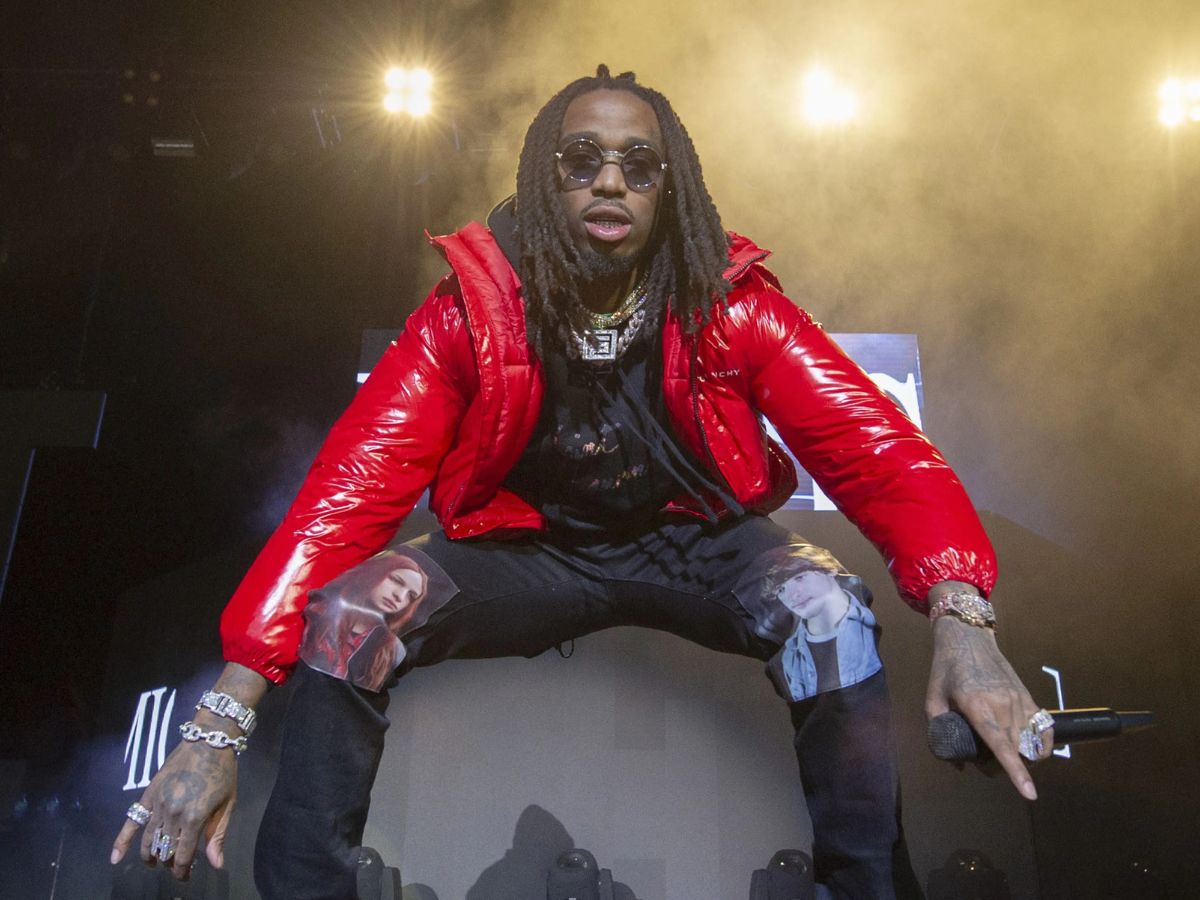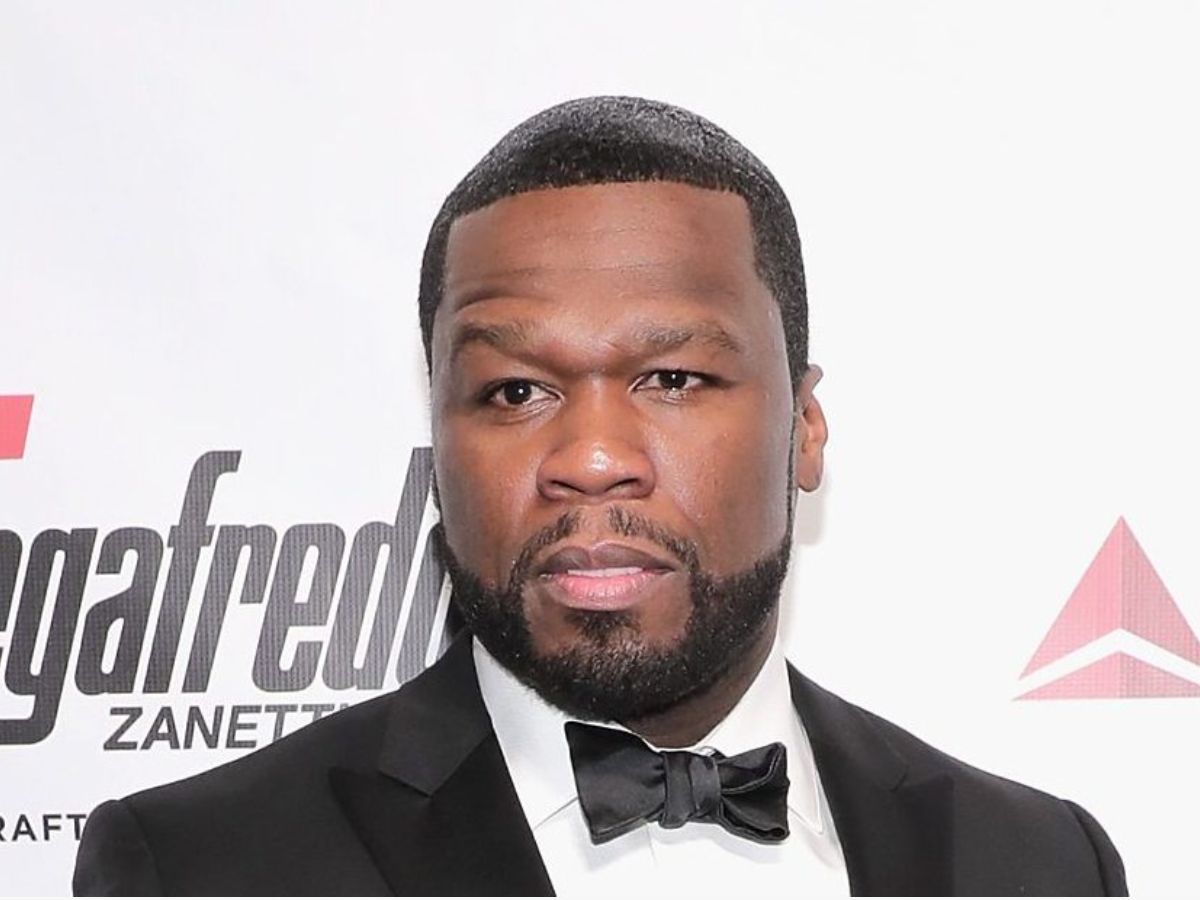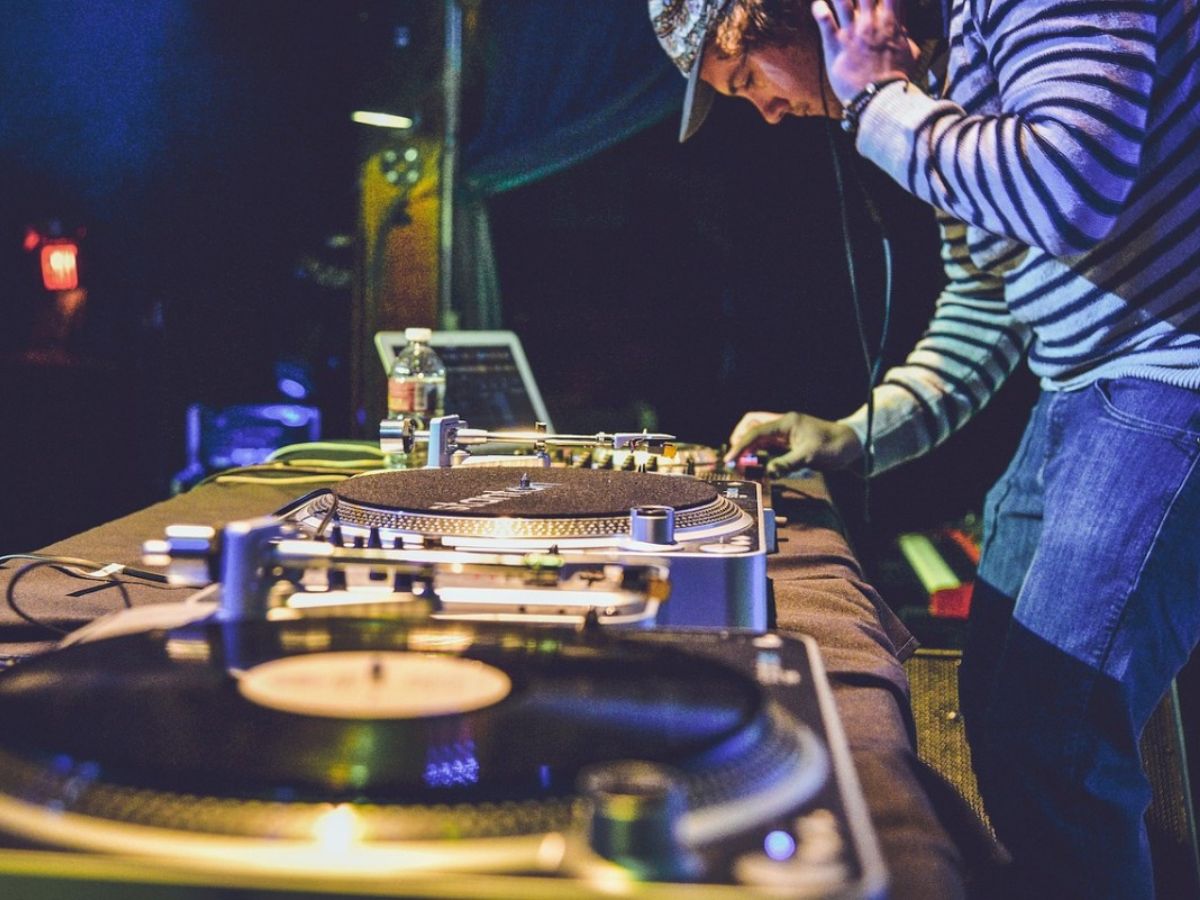

Hip Hop
What Is Hip Hop Genre
Published: November 4, 2023
Discover the origins, evolution, and impact of the hip hop genre. Explore the diverse elements of hip hop culture including music, dance, and fashion.
(Many of the links in this article redirect to a specific reviewed product. Your purchase of these products through affiliate links helps to generate commission for AudioLover.com, at no extra cost. Learn more)
Table of Contents
Introduction
Hip Hop is not just a genre of music; it is a cultural movement that has taken the world by storm. From its humble beginnings in the 1970s in the streets of the South Bronx, New York, Hip Hop has evolved into a global phenomenon that has influenced various aspects of society, including music, fashion, dance, and art.
What sets Hip Hop apart is its ability to reflect the experiences, struggles, and aspirations of marginalized communities. It gives a voice to those who have been historically silenced, allowing them to express themselves through powerful lyrics and beats. Hip Hop has always been a platform for storytelling, serving as a medium for social and political commentary.
At its core, Hip Hop is characterized by four main elements: MCing (rapping), DJing, graffiti art, and breakdancing. These elements, combined with a distinct sense of style and fashion, create a unique culture that has captivated millions of people around the world.
Since its inception, Hip Hop has undergone numerous transformations, adapting to the changing musical landscape and embracing new styles and sub-genres. From the gritty street narratives of artists like N.W.A and Tupac Shakur to the mainstream success of acts like Jay-Z and Kanye West, Hip Hop has consistently pushed boundaries and challenged societal norms.
Today, Hip Hop has become a global phenomenon, transcending cultural and geographical boundaries. It has spawned a wide array of sub-genres, including gangsta rap, conscious rap, trap, and drill music, each with its own distinct sound and lyrical themes.
However, with its growing popularity and influence, Hip Hop has also faced its fair share of criticism and controversies. From debates surrounding its portrayal of women and glorification of violence to accusations of cultural appropriation, the genre has been under constant scrutiny.
Nevertheless, Hip Hop continues to thrive, with emerging artists pushing the boundaries of the genre and embracing new sounds and styles. With its ability to capture the spirit of a generation and shine a light on social issues, Hip Hop remains a powerful force that will undoubtedly shape the future of music and culture.
Historical Background
The roots of Hip Hop can be traced back to the post-Civil Rights era in the United States. It emerged during a time of social and economic upheaval, as marginalized communities in urban areas struggled with poverty, crime, and racial discrimination.
The 1970s witnessed a shift in musical tastes, with disco dominating the airwaves. However, many young people in the South Bronx found it difficult to relate to the glamorous and extravagant world of disco, which seemed far removed from their own reality. As a result, they sought an outlet to express their frustrations and tell their own stories.
It was in this backdrop that the four key elements of Hip Hop began to take shape. MCing, or rapping, became a way for individuals to deliver powerful and poetic verses over beats and rhythms. DJing involved the manipulation of vinyl records, creating unique sounds and beats through the turntables. Graffiti art became a way for artists to leave their mark on the concrete walls of the city, using vibrant colors and intricate designs. And breakdancing showcased impressive moves and acrobatics, providing a physical expression of the music.
These elements came together to form a cultural movement that provided an alternative voice for the youth in urban communities. This new form of expression resonated with the struggles and experiences of African American and Latino communities, giving them a platform to share their stories and assert their cultural identities.
The birthplace of Hip Hop was the South Bronx, specifically the neighborhood of Sedgwick Avenue, where DJ Kool Herc is credited with hosting the first Hip Hop party in 1973. The party featured DJing and MCing, with Kool Herc providing the beats and encouraging crowd participation.
Word quickly spread about these parties, and the Hip Hop movement began to gain momentum. Soon, other DJs and MCs started hosting their own parties and events, contributing to the growth and development of the genre.
In the late 1970s and early 1980s, Hip Hop went through a period of rapid expansion and innovation. The release of groundbreaking albums such as Sugarhill Gang’s “Rapper’s Delight” and Grandmaster Flash and the Furious Five’s “The Message” helped to popularize the genre and bring it to a wider audience.
Over the years, Hip Hop has continued to evolve, incorporating influences from various musical genres and pushing artistic boundaries. It has become a powerful cultural force, shaping not only the music industry but also fashion, language, and popular culture as a whole.
Origins of Hip Hop
The origins of Hip Hop can be traced back to the vibrant neighborhoods of the South Bronx in New York City during the 1970s. It emerged as a cultural response to the social and economic challenges faced by marginalized communities, primarily African American and Latino youth.
One of the key figures in the birth of Hip Hop is DJ Kool Herc, a Jamaican-born DJ who moved to the Bronx in his early teens. In the early 1970s, he began hosting parties in the recreation room of his apartment building, where he would play a mix of funk, soul, and disco records.
At these parties, Kool Herc introduced a technique called “breakbeat,” where he isolated and extended the instrumental sections, or breaks, of the songs. This technique allowed the dancers to showcase their skills during the most rhythmic and energetic parts of the music.
Another important figure in the early days of Hip Hop is Afrika Bambaataa, who founded the Zulu Nation. Bambaataa took inspiration from diverse musical genres, including funk, soul, and rock, and combined them with the emerging Hip Hop elements. He played a crucial role in spreading the Hip Hop movement beyond the Bronx and into other boroughs of New York City.
Moving beyond just the DJing aspect, MCing, or rapping, became an integral part of Hip Hop. MCs would rhyme and flow over the beats provided by the DJ, using their words to tell stories, express their thoughts, and engage with the crowd. Early MCs, such as Grandmaster Caz and Melle Mel, played a pivotal role in establishing the art of rapping and laying the foundation for future generations of MCs.
Graffiti art also became an essential part of the emerging Hip Hop culture. Artists would use spray paint to create intricate and vibrant murals on subway trains and walls. This form of artistic expression allowed individuals to leave their mark on the city, form crews, and gain recognition for their talent and creativity.
Lastly, breakdancing, or b-boying/b-girling, contributed to the dynamic and energetic nature of Hip Hop. Influenced by various dance styles, including martial arts and gymnastics, breakdancing involved intricate footwork, spins, and tricks performed to the rhythm of the music. It became a form of self-expression and a way for dancers to showcase their physical prowess.
The combination of these elements – DJing, MCing, graffiti art, and breakdancing – created a culture that emphasized creativity, self-expression, and unity. Hip Hop provided a platform for individuals to share their experiences, thoughts, and aspirations while challenging societal norms and giving a voice to the marginalized communities.
The origins of Hip Hop in the South Bronx set the stage for a global movement that would transcend cultural boundaries and influence generations to come. It created a space for the underrepresented and continues to be a powerful force for social change and artistic innovation.
Elements of Hip Hop
Hip Hop is a multifaceted cultural movement that encompasses various artistic elements. These elements, often referred to as the pillars of Hip Hop, are integral to the genre’s identity and have played a significant role in its development and popularity. The four main elements of Hip Hop are MCing (rapping), DJing, graffiti art, and breakdancing.
1. MCing (Rapping): MCing, or rapping, is arguably the most recognizable element of Hip Hop. MCs use rhythm, rhyme, and wordplay to deliver powerful lyrics over beats and melodies. Whether sharing personal experiences, social commentary, or storytelling, MCs captivate audiences with their unique style and delivery. Rappers often express their individuality through their flow, vocal tone, and lyrical content, making MCing a deeply personal and expressive art form within Hip Hop.
2. DJing: DJing, the art of manipulating vinyl records (or digital files) to create unique sounds and beats, is another essential element of Hip Hop. DJs use turntables, mixers, and various effects to blend and transition between songs seamlessly. They manipulate the music to create catchy hooks, remix popular tracks, and provide the foundation for MCs to perform. DJs are not only responsible for providing the backing tracks but also for setting the mood and energy of a Hip Hop event.
3. Graffiti Art: Graffiti art is an integral part of the visual aspect of Hip Hop culture. Emerging from the streets of New York City, graffiti art involves the use of spray paint, markers, and other materials to create intricate and vibrant wall murals. Graffiti artists utilize their skills to showcase their talent, express their creativity, and make their mark on the urban landscape. Graffiti art in Hip Hop often features bold lettering, characters, and social or political messages, adding an element of visual storytelling to the culture.
4. Breakdancing: Breakdancing, also known as b-boying or b-girling, is the physical manifestation of Hip Hop. It is a dance form that combines elements of acrobatics, athleticism, and creativity. Breakdancers, known as b-boys and b-girls, showcase their skills through intricate footwork, spins, power moves, and freezes. Breakdancing is not only a form of artistic expression but also a way for individuals to engage with the music and showcase their physical talents. It is a highly competitive and visually captivating element of Hip Hop culture.
These four elements – MCing, DJing, graffiti art, and breakdancing – come together to form the foundation of Hip Hop culture. They represent the diversity and creativity within the genre and provide artists with various avenues for self-expression and storytelling. These elements have evolved over time, incorporating new techniques, styles, and influences, but they continue to serve as the pillars that define and distinguish Hip Hop from other genres of music.
It is important to note that Hip Hop culture is not limited to these four elements alone. Other aspects, such as beatboxing, fashion, language, and entrepreneurship, also play a significant role in the broader Hip Hop movement. These elements contribute to the richness and depth of Hip Hop as a cultural phenomenon.
Evolution of Hip Hop
The evolution of Hip Hop is a testament to its resilience and adaptability. From its humble beginnings in the South Bronx during the 1970s, Hip Hop has undergone significant transformations, both musically and culturally.
In the early years, Hip Hop was characterized by its raw and unfiltered sound. It primarily consisted of upbeat funk and soul samples, layered with catchy drum breaks. Artists such as Run-DMC, Grandmaster Flash and the Furious Five, and Public Enemy emerged during this era, using their music as a form of social commentary, addressing issues such as poverty, racial inequality, and police brutality.
In the late 1980s and early 1990s, Hip Hop experienced a golden age. This period saw the rise of influential artists like N.W.A, Tupac Shakur, and The Notorious B.I.G., who pushed the boundaries of storytelling and lyricism. The sound became more diverse, with the emergence of West Coast gangsta rap and East Coast boom-bap styles.
As the 1990s progressed, Hip Hop saw a shift towards a more commercial sound. Artists like Jay-Z, Nas, and Wu-Tang Clan brought a new level of lyrical prowess, while incorporating elements of mainstream pop and R&B to create crossover hits. This era also saw the rise of female MCs such as Missy Elliott and Lauryn Hill, who brought a fresh and unique perspective to the genre.
In the early 2000s, Hip Hop embraced a more diverse range of sub-genres. The popularity of Southern rap, characterized by artists like OutKast, Lil Wayne, and T.I., brought a new sound and perspective to the forefront. At the same time, the emergence of alternative and conscious rap, represented by artists such as Common and Mos Def, provided a platform for socially conscious and introspective lyricism.
In more recent years, Hip Hop has expanded even further, embracing new styles such as trap and drill music. Artists like Future, Migos, and Pop Smoke have brought their unique blend of hard-hitting beats, catchy hooks, and melodic flows to the forefront of popular culture. The influence of electronic music and mainstream pop has also played a significant role in shaping the sound of contemporary Hip Hop.
Aside from the musical evolution, Hip Hop has also made significant cultural strides. It has become a global phenomenon, transcending borders and bringing diverse voices and perspectives to the forefront. The influence of Hip Hop can be seen in various forms of popular culture, including fashion, language, and visual arts.
Furthermore, technology has played a key role in the evolution of Hip Hop. The rise of the internet and social media platforms have allowed artists to connect directly with their fans, bypassing the traditional record label model. This has led to a democratization of the industry, allowing more independent artists to gain recognition and success on their terms.
Overall, the evolution of Hip Hop has been marked by its ability to adapt, innovate, and reflect the changing times. With each new generation of artists, the genre continues to push boundaries and redefine what it means to be a Hip Hop artist. It remains a powerful force in popular culture and continues to captivate audiences around the world.
Influence and Impact of Hip Hop
Hip Hop has had a profound and far-reaching influence on various aspects of society, making it one of the most impactful cultural movements of our time. From music and fashion to language and activism, the influence of Hip Hop can be seen and felt around the world.
One of the most significant impacts of Hip Hop is its effect on the music industry. It has become one of the most popular genres globally, dominating charts and influencing other genres. Hip Hop has broken barriers and challenged conventional norms, bringing diversity and innovative sounds to the forefront. It has also provided a platform for artists of marginalized backgrounds to share their stories and experiences, fostering representation and inclusivity within the music industry.
Beyond music, Hip Hop has greatly influenced fashion and style. The fashion trends that emerged from Hip Hop culture, such as baggy pants, oversized jerseys, sneakers, and distinctive accessories, have become iconic. Hip Hop artists have become style icons, with their unique fashion choices driving trends and shaping popular culture. The culture’s emphasis on individuality and self-expression has encouraged people to embrace their own unique fashion sense.
Hip Hop has also had a significant impact on language and slang. It has introduced new words, slang terms, and expressions into mainstream vernacular. Phrases like “bling-bling,” “keeping it real,” and “dope” have become part of everyday conversations. The influence of Hip Hop on language extends beyond words, as it has also contributed to the development of storytelling techniques and lyrical poetry.
Furthermore, Hip Hop has played a pivotal role in giving a voice to marginalized communities and shedding light on social and political issues. It has been a tool for activism and a platform for social commentary. Artists have used their music to address topics such as racial inequality, police brutality, poverty, and the struggle for social justice. Hip Hop has sparked conversations and ignited movements, empowering individuals to raise their voices and push for change.
Education has also been influenced by Hip Hop, with its incorporation into curriculums as a tool for teaching history, literacy, and cultural studies. It has provided a means for connecting with students and bridging the gap between mainstream education and the reality of urban communities. Hip Hop has also created opportunities for aspiring artists, entrepreneurs, and professionals within the industry, driving economic growth and social mobility.
Moreover, the global popularity of Hip Hop has led to cultural exchange and collaboration between artists from different countries and backgrounds. This cross-pollination of ideas and styles has created a rich and diverse Hip Hop landscape, showcasing the power of music and cultural exchange in fostering understanding and unity.
In summary, Hip Hop’s influence and impact extend far beyond music. It has shaped fashion trends, influenced language, fueled activism, and provided a platform for voices that were previously unheard. Hip Hop has transcended borders and boundaries, becoming a global cultural phenomenon that continues to inspire and empower generations.
Diversity within the Hip Hop Genre
One of the defining characteristics of Hip Hop is its incredible diversity. The genre has evolved over the years, giving rise to a multitude of sub-genres and regional variations, each with its own unique sound and cultural influences. This diversity within Hip Hop reflects the multifaceted nature of the culture and its ability to resonate with people from different backgrounds.
Geographically, Hip Hop has spread from its birthplace in the South Bronx to become a global phenomenon. Artists from different regions have infused their local styles and cultural traditions into the genre, resulting in unique regional flavors. The West Coast has seen the emergence of gangsta rap with artists like N.W.A and Tupac Shakur, while the East Coast is known for its boom-bap sound and lyrical prowess of acts like Nas and Wu-Tang Clan. The South has its own distinct flavor with the rise of trap music and artists like OutKast and T.I., and the Midwest has contributed to the genre with acts like Common and Kanye West, bringing a soulful and introspective sound.
Not only is there regional diversity, but Hip Hop also encompasses a wide range of sub-genres and styles. From conscious rap, which focuses on social and political issues, to party-oriented club tracks, the spectrum of Hip Hop is vast. There are sub-genres like drill music, characterized by its intense and dark lyrical content, and alternative rap, which explores non-traditional sounds and themes. This diversity allows individuals to find their niche within the genre and connect with artists who resonate with their own experiences and musical preferences.
Another aspect of diversity within Hip Hop is the representation of different voices and perspectives. Historically, Hip Hop has been a platform for marginalized communities to share their stories and shed light on societal issues. African American and Latino artists have been at the forefront of the genre, using Hip Hop as a means to express their cultural identities, confront systemic injustices, and provide a voice for their communities. However, the genre has also seen the rise of artists from diverse backgrounds, including women, LGBTQ+ artists, and artists from various ethnic and cultural backgrounds, contributing to a more inclusive and representative Hip Hop landscape.
Furthermore, diversity within Hip Hop extends to the various artistic elements that define the genre. MCing encompasses a wide range of lyrical styles and flows, reflecting the individuality and creativity of the artists. DJing incorporates different techniques and skills, from scratching to beat juggling, allowing DJs to put their unique spin on the music. Graffiti art showcases diverse artistic styles and themes, while breakdancing embraces a variety of moves and techniques that highlight individual expression and creativity.
Ultimately, the diversity within the Hip Hop genre is a testament to its ability to evolve and adapt to different cultural influences. It provides a platform for artists to express their unique identities, experiences, and perspectives, while also fostering a sense of community and shared cultural heritage. The richness and breadth of diversity within Hip Hop contribute to its longevity and ongoing relevance in popular culture.
Criticism and Controversies in Hip Hop
While Hip Hop has had a significant impact on music and popular culture, it has also faced criticism and been embroiled in controversies throughout its history. These critiques and controversies raise important discussions about the genre’s representation, lyrical content, and portrayal of various social issues.
One of the main criticisms leveled at Hip Hop is its often explicit and controversial lyrical content. Some argue that certain artists promote violence, misogyny, and materialism through their lyrics, perpetuating harmful stereotypes. The glamorization of drugs, guns, and a hyper-masculine image has been a recurring theme in some sub-genres of Hip Hop, leading to concerns about the impact on listeners, particularly younger audiences. Critics argue that these lyrical themes can reinforce negative stereotypes and contribute to the perpetuation of violence and criminal behavior.
Another point of contention is the portrayal of women in Hip Hop. Some argue that the genre often objectifies women, reducing them to sexualized props and reinforcing gender stereotypes. The use of derogatory language and explicit imagery in lyrics and music videos has drawn criticism for promoting a culture of misogyny within Hip Hop. However, it is important to note that there are also female artists within the genre who challenge these stereotypes and use their platform to uplift and empower women.
Cultural appropriation is another issue that has been raised in relation to Hip Hop. Critics argue that the genre and its cultural elements have been co-opted and commercialized by mainstream artists, often without giving proper credit or understanding the historical and cultural significance behind them. This appropriation raises questions about respect for Hip Hop’s origins and the exploitation of its cultural contributions for profit.
Furthermore, there have been controversies surrounding beefs and rivalries between artists, often leading to diss tracks and public feuds. These conflicts have sometimes escalated into real-life violence and have perpetuated a divisive and combative image of Hip Hop.
Despite the criticism and controversies, it is important to recognize that Hip Hop is a diverse and multifaceted genre. Many artists within the Hip Hop community use their platform to address social issues, advocate for change, and uplift their communities. They serve as positive role models and use their art to inspire and educate. Additionally, the genre has also evolved to incorporate more conscious and socially aware themes, with artists using their lyrics to shed light on topics such as racial inequality, social justice, and systemic oppression.
Overall, the criticisms and controversies within Hip Hop reflect the complex and ever-evolving nature of the genre. They provide opportunities for dialogue, growth, and self-reflection within the Hip Hop community and society as a whole.
Current State and Future of Hip Hop
Hip Hop is currently more popular and influential than ever before. It continues to dominate the global music scene, with artists breaking records and pushing boundaries. However, the genre is also experiencing a period of diversification and evolution as new artists emerge and new styles emerge.
The current state of Hip Hop is characterized by a vibrant and diverse landscape. The genre has expanded beyond the traditional boundaries, incorporating elements of other genres like pop, R&B, and electronic music. This crossover appeal has contributed to its mainstream success and has allowed for a broader audience to connect with the music.
One of the significant developments in recent years is the rise of streaming platforms, which have revolutionized the way music is consumed and distributed. This shift has democratized the industry, giving independent artists a platform to share their music and reach a global audience without the need for major label support. It has also allowed for a more diverse range of voices to be heard, as artists from different backgrounds and regions can now find success and build dedicated fan bases.
In terms of lyrical content, Hip Hop continues to be a platform for storytelling and social commentary. Artists are using their music to shed light on pressing issues such as systemic racism, social inequality, mental health, and political turmoil. This conscious approach to lyricism contributes to the genre’s relevance and its power to bring about social change and inspire meaningful conversations.
The future of Hip Hop holds great promise. Artists are constantly pushing the boundaries and experimenting with new sounds and styles. The genre’s ability to adapt and evolve has allowed for the emergence of sub-genres like trap, drill, and alternative rap. These sub-genres bring fresh perspectives and energy to the genre, attracting new audiences and expanding the possibilities of what Hip Hop can be.
Technology will continue to play a significant role in shaping the future of Hip Hop. Advancements in production software and digital instruments have made it easier for artists to create music and experiment with new sounds. The use of social media platforms and streaming services as promotional tools has also allowed for greater connectivity between artists and fans.
Furthermore, the increased focus on inclusivity and diverse representation within the industry will shape the future of Hip Hop. The ongoing movement for gender equality and the rise of female MCs, producers, and DJs have brought fresh perspectives and voices to the forefront. Artists from different ethnic, cultural, and LGBTQ+ backgrounds are also gaining visibility and contributing to the genre’s ever-expanding tapestry.
As the world continues to change, so too will the landscape of Hip Hop. Artists will continue to push the boundaries of creativity, tackle social issues, and use their platforms for positive change. The future of Hip Hop is bright, promising, and full of possibilities, ensuring that this dynamic and influential cultural movement will continue to thrive for years to come.
Conclusion
Hip Hop, with its rich history, diverse elements, and global impact, has become a cultural force that transcends boundaries and resonates with people from all walks of life. From its humble beginnings in the South Bronx to its global prominence today, Hip Hop has continually evolved and adapted, reflecting the ever-changing social and musical landscape.
Throughout its journey, Hip Hop has faced both praise and criticism. It has been celebrated for its ability to provide a voice for the marginalized, spark social and political discussions, and push artistic boundaries. However, it has also faced scrutiny for aspects such as explicit content, portrayal of women, and controversies within the industry.
Nevertheless, the influence and impact of Hip Hop cannot be denied. It has shaped music, fashion, language, and popular culture as a whole. It has provided a platform for artists to express their individuality, tell their stories, and contribute to social change. Hip Hop has been a powerful tool for activism and has empowered communities that have historically been silenced.
The diversity within the genre, whether in terms of regional styles, sub-genres, or representation, showcases its ability to embrace a multitude of voices and experiences. From the West Coast to the East Coast, and from conscious rap to trap music, Hip Hop remains a space for artists to showcase their unique identities and perspectives.
Looking to the future, Hip Hop shows no signs of slowing down. With advancements in technology, the rise of streaming platforms, and a focus on inclusivity, the genre is poised to continue its evolution. New artists will emerge, styles will change, and social issues will be tackled through the powerful medium of Hip Hop.
In conclusion, Hip Hop is not just a genre of music; it is a cultural movement that has shaped generations and left an indelible mark on society. Its ability to provide a platform for the underrepresented, its power to ignite social change, and its constant evolution make it a force to be reckoned with. Hip Hop will continue to inspire, provoke, and captivate audiences around the world, ensuring that its influence will be felt for generations to come.

